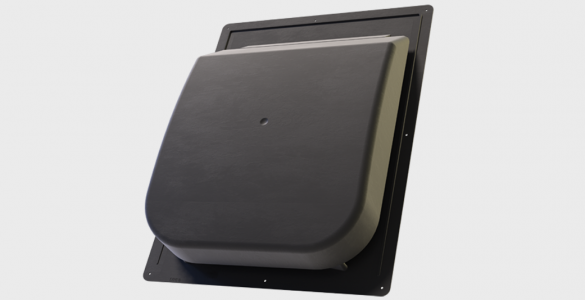Step 1
Locate the roof vents toward the rear or side of the house, spaced evenly over the width of the roof.
Step 2
Mark the location of all roof vents before cutting holes. Center the holes between the rafters down 2′ (24″) from the peak of the roof. When installed as an intake vent, please position vent at 2′ (24″) from the eave or edge of the roof. Ensure that attic insulation does not block intake vent.
Step 3
Holes should be cut 11″ high x 10″ wide. The Python 65 Slant Back Vent box has a template for error-proof installation. Using the template, mark the outline for the hole on the roof. The hole in the roof should never be larger than the hole at the bottom of the vent.
Step 4
Shingle up until shingles cover the bottom of the hole. Cut the excess shingles away. Because shingles are part of a porous system, applying an approved sealant around the edge of the hole is required.
Step 5
The top of the Python 65 Slant Back Vent has a slanted peak. Ensure that the vents are installed with the peak at the UP position.
Step 6
Secure the vent base with a minimum of 8 galvanized nails. Nails should be a minimum of 1¼” long and should penetrate the vent, shingle, and decking. Secure a nail in each corner of the vent flashing and along the middle of each side of the vent.
Step 7
For proper sealing, use a plastic-friendly roofing sealant. All nails should receive a dab of sealant.
Step 8
Shingle up and around the vent ensuring that the shingles butt up against the throat of the vent.
Step 9
Pre-cut the top shingle to fit around the slant of the vent and nail in place. Shingle up as normal to complete installation.







